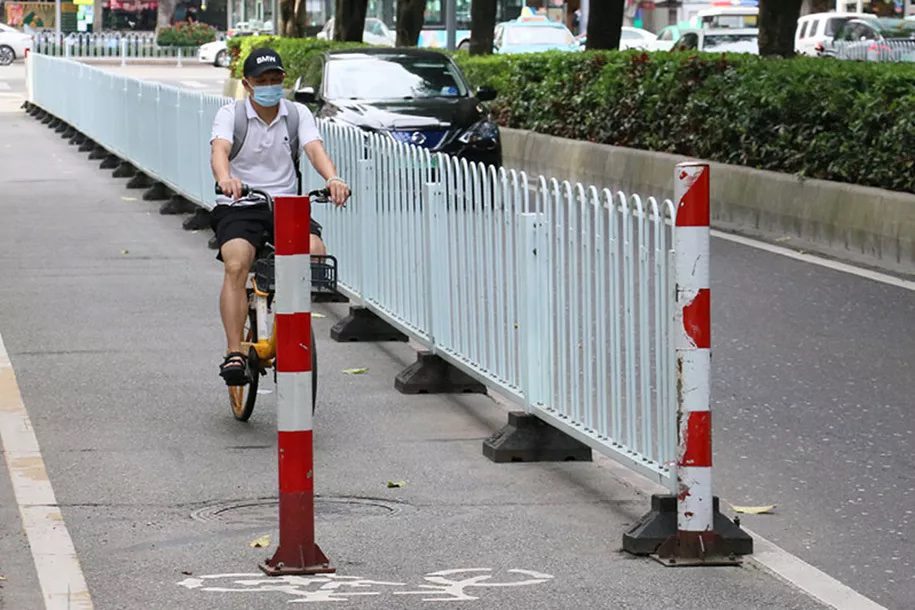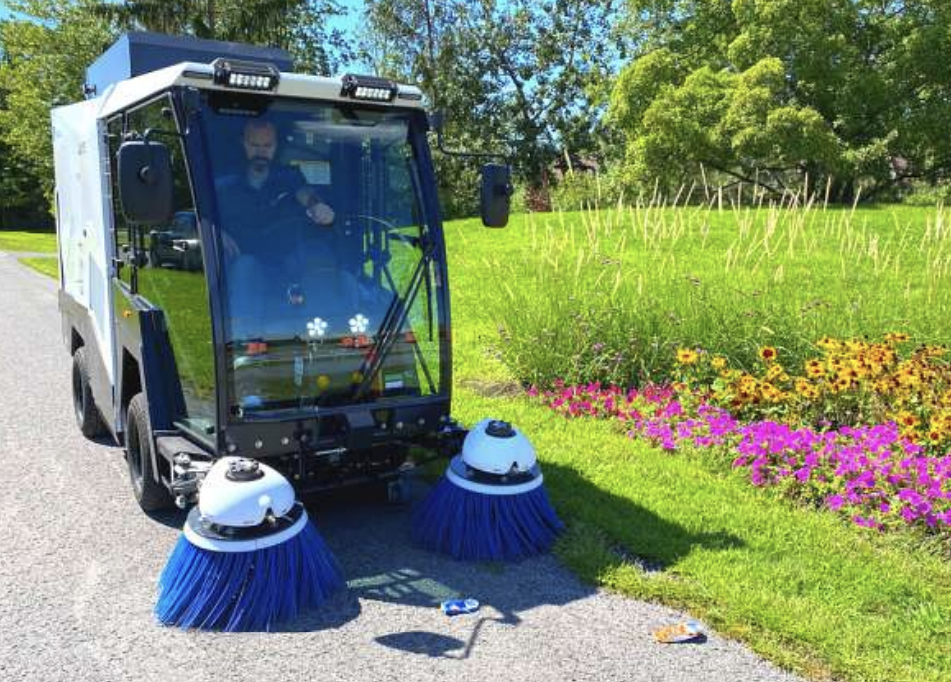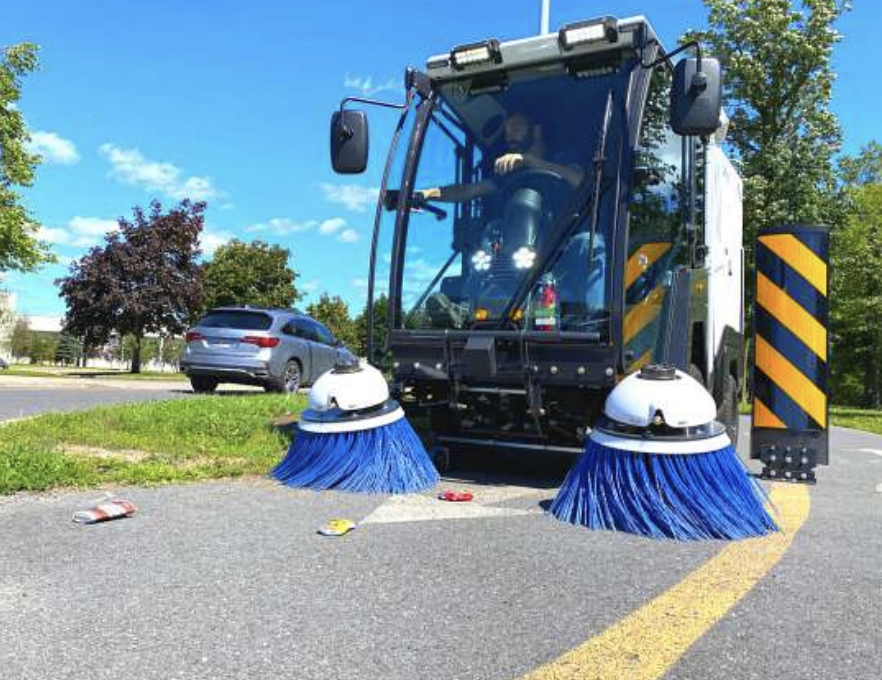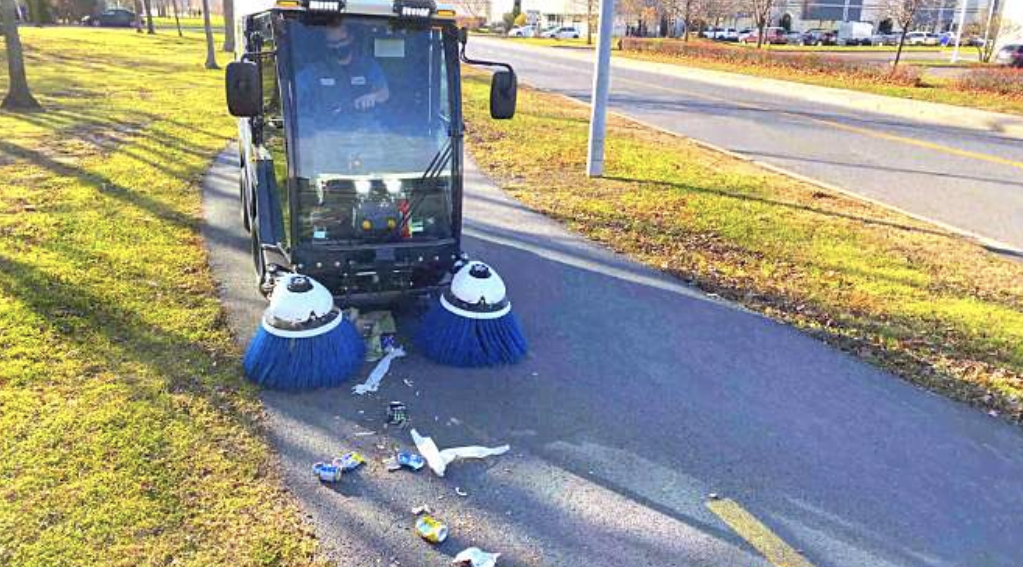An increase in protected bicycle lanes is good news for cyclists and the environment. Urban protected bike lanes “can significantly reduce greenhouse gas (GHG) emissions, lower transport costs, and prevent road fatalities compared to investment in other infrastructure,” according to a 2022 report from the Institute for Transportation and Development Policy’s (ITDP) global Cycling Cities campaign and supported by the FIA Foundation.
That report found that every $200 spent on motor vehicle highways leads to the creation of one tonne of GHG emissions per year. In contrast, spending the same amount on protected bicycle lanes “mitigates almost exactly the same level of GHG emissions.”

Photo Courtesy FIA Foundation
Given these advantages, it’s no surprise that municipalities across the U.S. are adding protected bike lanes. However, the work doesn’t end when one is added. Like any roadway, a bike path must also be kept clean and free of clutter to ensure the safety of cyclists. This issue can be challenging because traditional street sweepers are too wide to clean them.
The answer, of course, is to develop a smaller sweeper — and that’s exactly what Canada-based manufacturer Westvac Industrial has done.
According to a product description, the company’s LS125 Indoor/Outdoor Electric Sweeper is only 48 inches wide, making it “ideal for sidewalks, bike lanes, parking lots, and more.”
Among the cities that have taken notice is Ann Arbor, MI. In March, the Ann Arbor City Council approved purchasing a Westvac LS125 in a move that will let the city install vertical separators, called bollards, along bike lanes while maintaining the road surface.
The bollards are designed to keep cars and trucks out of the bike lanes. The exact cost was $258,445, which will be shared with the Downtown Development Authority.

Photo Courtesy Westvac Industrial
“The purchase is going to allow us to maintain the single-track bike lanes, and that has been an impediment to the installation of bollards,” Dharma Akmon, a council member, told Michigan Live. “So, very quickly, we’re going to be able to put bollards where there aren’t any.”
Ann Arbor’s purchase followed a similar purchase made by the city of San Diego in 2022. City officials even let residents there vote on what the electric mini sweeper would be named — SWEEP-E was the winner.

Photo Courtesy Westvac Industrial
The equipment is the only one in San Diego’s fleet of 28 sweepers. According to the San Diego stormwater department, the electric mini sweeper has “zero emissions and operates far more quietly than a traditional sweeper,” ABC10 noted. The lack of noise allows workers to clean in the early morning and late night hours without bothering city residents.
Even though it is quiet, the Westvac LS125 doesn’t lack power. It boasts a lithium-ion nickel manganese cobalt (LiNMC) battery that lets it operate for up to nine hours. That means it can put in a full workday before recharging at night with a standard J1772 connector for Level 2 EV chargers, Electrek reported.
The machine has a payload of 1,425 pounds and a sweeping width from 44 to 100 inches and isn’t only used by cities and municipalities to maintain bike lanes. It is also used by airports, distribution centers, shopping malls, schools, manufacturing plants, amusement parks, casinos, and numerous other facilities for cleaning and maintenance.





